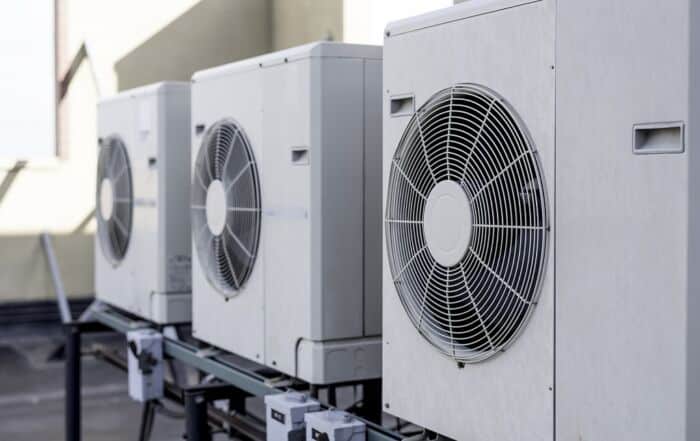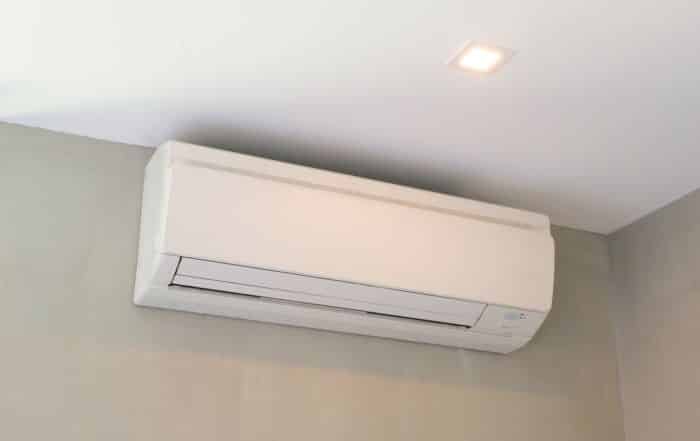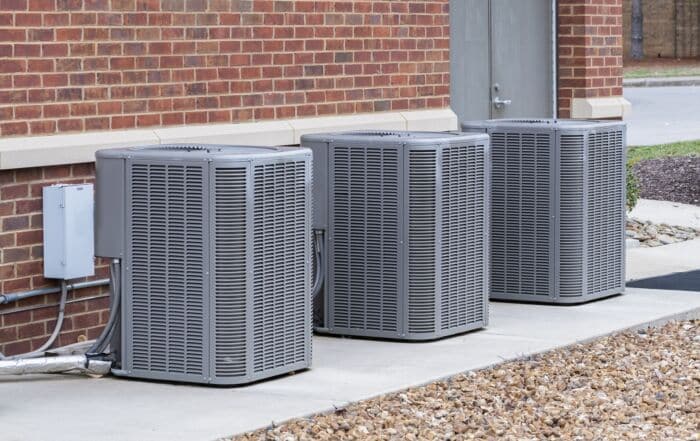When it comes to diagnosing your home's air conditioning problems, it's a case of "one step forward, two steps back". Blower motors are no exception and can be tricky to pinpoint the source of an issue. This article will provide a comprehensive guide on how to diagnose a bad blower motor and assess if it needs to be replaced or repaired.
The blower motor is responsible for distributing air throughout your home. If you notice your vents not producing enough air or coming out at an unusual temperature, then the blower motor may be faulty. There are two main types of blower motors used in HVAC systems: PSC (Permanent Split Capacitor) motors and ECM (Electronically Commutated Motor) motors. PSC motors are older and more common in many systems. They use a capacitor to help start and run the motor efficiently. These motors are less expensive but also less energy-efficient than their ECM counterparts. On the other hand, ECM motors are newer and more advanced. They use a built-in microprocessor to control the motor's speed and operation, making them significantly more energy-efficient than PSC motors. ECM motors also tend to run more quietly and offer better performance overall, but they come at a higher cost. When choosing between the two types of motors, it's essential to consider factors such as energy efficiency, cost, and system compatibility.
This guide will provide step-by-step instructions for diagnosing a bad blower motor, taking into account both PSC and ECM types. Keep in mind that working with HVAC systems can be dangerous if you don't know what you're doing. Always follow safety precautions and consult a professional if you're unsure about any aspect of the process. Read on as we explain in detail exactly what needs to be done when diagnosing a bad blower motor.
Understanding The Sequence Of Operation
Understanding the sequence of operation of a blower motor is essential to diagnosing any problems that may arise. The sequence of operation is a series of events that take place in a specific order for an HVAC system to function correctly. In the case of a furnace with a blower motor, the sequence begins with a thermostat call for heating or cooling.
In HVAC systems, letter terminals refer to specific connections on the thermostat and the control board that are responsible for different functions. Each letter represents a particular function or component in the system. For cooling mode, the thermostat connects 24 volts from the R (power) terminal to the Y (cooling) and G (fan) terminals. The Y terminal energizes the outdoor unit, while the G terminal energizes the air handler's blower motor.
For heating mode, the thermostat connects the 24 volts from the R (power) terminal only to the W (heating) terminal, which initiates a series of events for the furnace to start up. Unlike in cooling mode, the G (fan) terminal is not energized, as the control board is responsible for signaling the blower motor when to turn on. This typically occurs 30 to 60 seconds after the flame has ignited, allowing the heat exchanger to warm up before the blower motor circulates warm air through the ducts.
The first step is to understand how the blower motor works. . Once you understand how the motor works, you can then begin to diagnose any potential issues with it.
Safety Precautions
It is estimated that over 200,000 house fires are caused by electrical problems each year. Before attempting to diagnose a bad blower motor it is important to take safety precautions.
Always disconnect power from the furnace before opening the panel and inspecting the motor. Make sure the power is off for at least one minute before touching any of the components in order to ensure all capacitors inside have discharged. Wear gloves, goggles, and other protective gear when working with electricity and always make sure you are properly grounded.
Taking these simple steps can help protect against harm while diagnosing a bad blower motor. Moving on to visual inspection, this may be necessary to determine if the problem lies with the motor itself or another component of the system.
Visual Inspection
The first step in diagnosing a bad blower motor is to visually inspect it. Look for any obvious signs of damage, like cracking or fraying in the insulation of the wires and terminals. Check for worn or burned out components, as well as any corrosion.
Here are some other key points to consider:
- Make sure the motor is properly mounted and secure.
- Examine the original wiring diagram to ensure all connections are correct and secure.
- Visually inspect the capacitor for any physical damage or discoloration that might indicate an issue with it not functioning properly.
Once you've completed your visual inspection of the blower motor, it's time to move on to checking the power supply.
Checking Power Supply
It's estimated that nearly 20% of HVAC blower motor repairs are caused by a lack of power supply. To diagnose a bad blower motor, it's important to check the power supply first. A multimeter can be used to measure the voltage and current at the motor terminals. If the voltage is too high or too low, then this indicates an issue in the power supply and not with the motor itself.
The next step is to verify capacitor functionality. To do this, a capacitor tester should be used to test for capacitance and continuity. If either of these tests fail, then it's likely that there is an issue with the capacitor which needs to be replaced. This could be causing reduced performance or complete failure of the blower motor. Moving onto verifying capacitor functionality will help determine if this is indeed an issue with your system.
Verifying Capacitor Functionality
The capacitor is responsible for helping the blower motor to start. To verify that it’s working correctly, use a multi-meter to measure its capacitance. Start by unplugging the power, then disconnect the capacitor wires from the blower motor. Set your multimeter to measure capacitance, then attach the leads of the meter to each of the capacitor terminals. You should get a reading that reflects the capacitance stated on its label. If not, it’s likely that the capacitor has failed and needs to be replaced. To be sure, test continuity across all three terminals with an ohmmeter—if there’s no continuity, replace it. If all tests come back normal, reconnect the capacitor to the blower motor and plug in power to continue diagnosing other components of your system. Read more about detailed capacitor troubleshooting.
Moving on, assessing motor temperature is an important factor for proper diagnosis.
Comparing Amp Draws
Having identified the motor's temperature, the next step is to compare amp draws. This can be done with a multimeter, or by using an amp clamp on the lead wires. Comparing the motor's amps against its rated amps will help you determine if there is an issue with the blower motor that needs to be addressed.
Here are three tips for comparing amp draws:
- Make sure that both your multimeter and amp clamp are set to AC voltage before connecting them to any wires.
- Measure the current draw of the motor at full load and compare it to its rated amps.
- If necessary, use a VOM to measure voltage drop across the control circuit and power circuit of the motor.
Now that we've compared amp draws, we need to inspect for signs of a bad blower motor by inspecting its spin. To do this, we'll want to make sure that all connections are secure and tight and then check for proper rotation direction when turning on the power supply.
Inspecting Motor Spin
In order to diagnose a bad blower motor, the first step is to inspect the motor spin. To do this, turn off the power and disconnect the electrical harness. Then, remove any screws or bolts that are holding it in place. Once removed, the motor should be able to be manually spun by hand. It should spin freely and smoothly, with no grinding or jerking. If there is any obstruction preventing it from spinning properly, you will need to investigate further to identify its cause.
If the motor spins correctly, move on to identifying any unusual noises coming from it. These could provide clues as to what kind of issue you are dealing with and what steps you may need to take next. For instance, a humming noise could indicate a faulty capacitor or winding issue that needs to be addressed. Transitioning into identifying these noises can help further your diagnosis of a bad blower motor.
Identifying Unusual Noises
Now that we have inspected the motor spin, it's time to identify any unusual noises. According to the National Fire Protection Association, approximately 5% of all home fires in the United States are caused by malfunctioning heating systems. This emphasizes how important it is to properly diagnose a bad blower motor.
In order to identify any strange noises from a failing blower motor, start by listening for loud and persistent rattling or grinding sounds. These could be signs of worn bearings or an unbalanced fan wheel. Also listen for screeching or squealing noises which could indicate worn drive belts or low lubrication levels in the motor shafts. Any of these issues could lead to a failed blower motor and should be addressed as soon as possible.
The next step is to inspect the blower wheel for signs of damage or wear that may be causing the issue.
Inspecting The Blower Wheel
The first step to diagnosing a bad blower motor is inspecting the blower wheel. This is the fan-like device that circulates air from the furnace and into your duct system. To do this, locate the access panel of the furnace and remove it. Once you have access, check for any blockages in the wheel or any visible damage like cracks or missing pieces. If you notice anything blocking or obstructing the wheel, clean it off and check again.
It's also important to make sure that there is no debris around it that could be causing issues with air flow. Make sure all filters are clear of dust and dirt to ensure proper operation of the blower motor. Check for loose screws, bent blades, or other signs of damage as well. If any of these problems are present, then you may need to replace the entire blower motor assembly rather than just one part.
Importance Of Clean Filters
The importance of clean filters cannot be overstated when diagnosing a bad blower motor. Clogged filters can cause the blower to overheat, which can damage the motor and even cause it to fail. It's easy to check the air filter, simply remove it and hold it up to a light. If you can see through it easily, your filter is clean and in good shape. If not, it needs to be replaced or cleaned with a vacuum cleaner or compressed air. Additionally, check for any dust or debris that has collected on the fan blades or other parts of the motor; if present, this should also be removed for proper operation.
Regularly cleaning or replacing your air filter is an important part of maintaining your blower motor. This simple task can help keep your unit running smoothly and efficiently for years to come. To ensure optimal performance, this necessary step should never be neglected. Moving on from here, checking motor bearings is another crucial component in diagnosing a bad blower motor.
Checking Motor Bearings
An ominous humming noise, like the sound of a distant airplane, can be heard when the blower motor is turned on. To diagnose the bad motor, we must check its bearings. It's time to put on our detective hats and investigate further.
| Investigation | Result |
|---|---|
| Feel for heat | No heat detected in the motor housing or shaft |
| Listen for noise | Humming sound increased when pressure applied to bearing area |
| Check voltage at terminals | Voltage present; no signs of electrical interference |
| Spin shaft manually with fingers | Shaft turns smoothly but with slight resistance from bearing area |
The investigation revealed that the bearings are likely worn out and need to be replaced. We have now diagnosed the cause of the bad blower motor: its bearings have failed. The next step is to determine if it is feasible to replace just these components, or if total motor replacement is necessary.
When To Consider Total Motor Replacement
When a blower motor is not working properly, it may be time to consider replacing the entire motor. Here are some indicators that point to total replacement:
- Poor performance:
- The motor is running slower than usual, or unable to achieve the desired speed
- There is an unusual amount of vibration coming from the motor
- Excessive noise:
- Unusual humming or buzzing noises when the motor is turned on
- High-pitched screeching noises during operation
Replacing the entire motor may be necessary if there are any signs of damage such as burning smells, smoke, sparks, or charred wiring. It's also important to check for any loose parts or worn out pieces that need to be replaced. If neither repairs nor replacement of individual components can restore proper function, then total replacement should be considered.
Conclusion
In conclusion, diagnosing a bad blower motor can be a challenging task. It's important to take the proper safety precautions and always inspect the power supply first before proceeding. Once you've analyzed the situation and checked the capacitor, blower wheel, and filters for signs of wear or damage, then it's time to inspect the motor bearings. If they're worn out, it may be time for total replacement.
By taking into account all of these factors and being mindful of any potential problems that could arise, you'll be able to accurately diagnose a bad blower motor in no time. Through thorough inspection and careful consideration of all possible scenarios, you can achieve success when it comes to repairing or replacing this crucial piece of equipment.
At the end of the day, diagnosing a bad blower motor requires precision and patience. By paying close attention to details and using your powers of observation, you'll be able to properly assess any issues with this important component quickly and effectively. With these tips in mind, you'll have no problem dealing with a faulty blower motor!
Related Posts
Exploring Ductless Air Conditioning Systems for Small Spaces
If you’re a homeowner tired of sweating through sweltering summers, a ductless air conditioning [...]
Signs Your Air Conditioning Unit Needs Professional Maintenance
Imagine coming home on a sweltering summer day only to find that your air [...]
Common Misconceptions About Air Conditioning Usage and Costs
Air conditioning units are a staple in many homes, especially during the hot summer [...]


